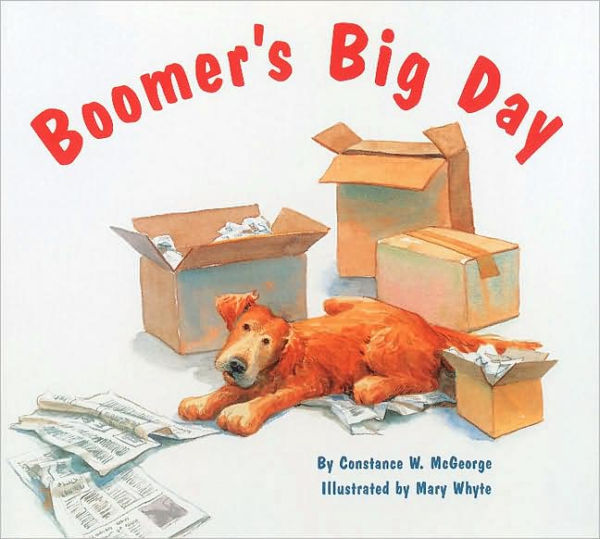This month's Book Nook topic is...
Making Predictions with Boomer’s Big Day

Reading comprehension is about more than understanding the information conveyed in the pictures and text of a book. To really understand a story, children must also fill in what the writer is “saying” but hasn’t specifically stated. In other words, children need to read between the lines to grasp the overall message of a story. To read between the lines, readers must draw on what they already know, as well as their problem-solving and reasoning skills. You can help children learn to do this by encouraging them to look for meaning beyond the information provided by the illustrations and the words you read.
One way to help children look beyond the illustrations and words is to encourage them to use their knowledge and experience to predict what will happen in a story. Children who are encouraged to predict what will happen in a story get into the habit of searching for meaning, which is what reading is all about. Children who are beginning to speak in sentences are ready to start making predictions.
Let’s get started!
The Book:
Boomer’s Big Day by Constance W. Mcgeorge
Why we chose it
In this book, a dog named Boomer is very confused by an unusual start to his day. Boomer cannot find his toys, the humans in his house are rushing around, and most confusing of all, strangers arrive to pack all the things in Boomer’s house into boxes. Boomer has no idea that he is moving! In fact, this isn’t explicitly stated in the book, creating many opportunities to make predictions about what’s happening, what Boomer will do and where he might be going. While this book can be read with younger children, children 3-5 years old are more likely to have the language skills and experience to make predictions throughout this story.
Help your child predict
The first time you read a story is an excellent opportunity to predict, because your child does not yet know the answer. Predicting is not about being right or wrong – it’s about thinking about what might happen. Once your child has heard a story, you can still predict by thinking about what happens to the characters after the story is finished.
You can encourage your child to predict by:
- Making “thinking-out-loud” comments
- Asking questions that build understanding
Thinking-out-loud comments show your child that you are thinking about the story and trying to figure out what might happen next. Thinking-out-loud comments start with words like:
- “I’m thinking that…”
- “I’m wondering about…”
- “I’m trying to figure out…”
Unlike questions, comments don’t require a response. However, if you make a comment and then wait, chances are your child will want to respond to your comment!
You can also encourage your child to make predictions by asking questions like:
- Where do you think the strangers will take all of the family’s things?
- Where do you think Boomer and his family are going?
- What do you think Boomer is going to do in this new house?
If your child has difficulty answering these questions, just provide your own answer and keep reading.
Get your child predicting before the reading
Before you read this book for the first time, look at the cover with your child and encourage him to predict what the story will be about. When talking about the cover of Boomer’s Big Day, which shows Boomer surrounded by packed boxes, you could say, “This story is called Boomer’s Big Day. I’m thinking that those boxes are filled with Boomer’s toys. What do you think?” Then you could wait to see if your child responds to your question. Once your child responds, you could say, “Maybe. Let’s read the book and find out.”
Help your child predict during the reading
During the first reading, make comments or ask questions about what’s happening, and what will happen next. For example, if your child likes the page where Boomer goes for a squished ride in a van packed with belongings, you could make a comment like:
“I wonder if the family will be able to find Boomer between all of that furniture”
Or, you could ask:
“Do you think Boomer will be able to get out once the van stops?”
Keep your child predicting after the reading
When you finish reading the book with your child, you can continue to predict by asking questions and making comments about what might happen after the story ends.
For example, you might make a thinking-out-loud comment like, “I’m thinking that Boomer will make lots of new animal friends in this neighborhood,” or ask a question like, “What do you think Boomer will do when he wakes up?”
Encouraging your child to think about what might happen after the story ends is one way to keep predicting even after he already knows the whole story.
Happy reading!
More Resources
The strategies in this Book Nook post are drawn from Hanen’s practical, research-based guidebooks for building emergent literacy. Explore the links below to learn more about how these guidebooks can support you.
For Parents I'm Ready! guidebook
I'm Ready! guidebook
For Educators ABC and Beyond guidebook
ABC and Beyond guidebook
